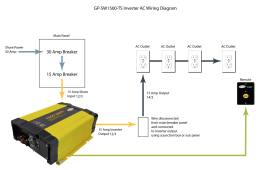RVLiFe
Solar Enthusiast
- Joined
- Jun 14, 2021
- Messages
- 234
I actually purchased an inverter with a built-in transfer switch and wired one circuit/line of the RV breaker panel to it. That line runs the refrigerator, an outlet on the counter(coffee machine/toaster) the TV and a couple of outlets near my couch. That’s all I need for power. No need to power every outlet in the RV. Start with your breaker panel and find out what is running off each line. You may find something similar that will work for you.



